Preclinical mouse model of a misfolded PNLIP variant develops chronic pancreatitis
- PMID: 36631248
- PMCID: PMC10257759
- DOI: 10.1136/gutjnl-2022-327960
Preclinical mouse model of a misfolded PNLIP variant develops chronic pancreatitis
Abstract
Objective: Increasing evidence implicates mutation-induced protein misfolding and endoplasm reticulum (ER) stress in the pathophysiology of chronic pancreatitis (CP). The paucity of animal models harbouring genetic risk variants has hampered our understanding of how misfolded proteins trigger CP. We previously showed that pancreatic triglyceride lipase (PNLIP) p.T221M, a variant associated with steatorrhoea and possibly CP in humans, misfolds and elicits ER stress in vitro suggesting proteotoxicity as a potential disease mechanism. Our objective was to create a mouse model to determine if PNLIP p.T221M causes CP and to define the mechanism.
Design: We created a mouse model of Pnlip p.T221M and characterised the structural and biochemical changes in the pancreas aged 1-12 months. We used multiple methods including histochemistry, immunostaining, transmission electron microscopy, biochemical assays, immunoblotting and qPCR.
Results: We demonstrated the hallmarks of human CP in Pnlip p.T221M homozygous mice including progressive pancreatic atrophy, acinar cell loss, fibrosis, fatty change, immune cell infiltration and reduced exocrine function. Heterozygotes also developed CP although at a slower rate. Immunoblot showed that pancreatic PNLIP T221M misfolded as insoluble aggregates. The level of aggregates in homozygotes declined with age and was much lower in heterozygotes at all ages. The Pnlip p.T221M pancreas had increased ER stress evidenced by dilated ER, increased Hspa5 (BiP) mRNA abundance and a maladaptive unfolded protein response leading to upregulation of Ddit3 (CHOP), nuclear factor-κB and cell death.
Conclusion: Expression of PNLIP p.T221M in a preclinical mouse model results in CP caused by ER stress and proteotoxicity of misfolded mutant PNLIP.
Keywords: CELL DEATH; CHRONIC PANCREATITIS; PANCREATITIS.
© Author(s) (or their employer(s)) 2023. No commercial re-use. See rights and permissions. Published by BMJ.
Conflict of interest statement
Competing interests: None declared.
Figures
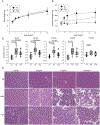
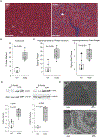
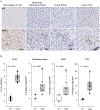
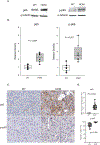
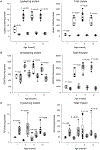


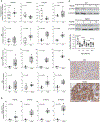

References
-
- O'Reilly LP, Benson JA, Cummings EE, et al. Worming our way to novel drug discovery with the Caenorhabditis elegans proteostasis network, stress response and insulin-signaling pathways. Expert Opin Drug Discov 2014;9(9):1021–32. doi: 10.1517/17460441.2014.930125 [published Online First: 2014/July/08] - DOI - PubMed
Publication types
MeSH terms
Substances
Grants and funding
LinkOut - more resources
Full Text Sources
Molecular Biology Databases
Research Materials
Miscellaneous
